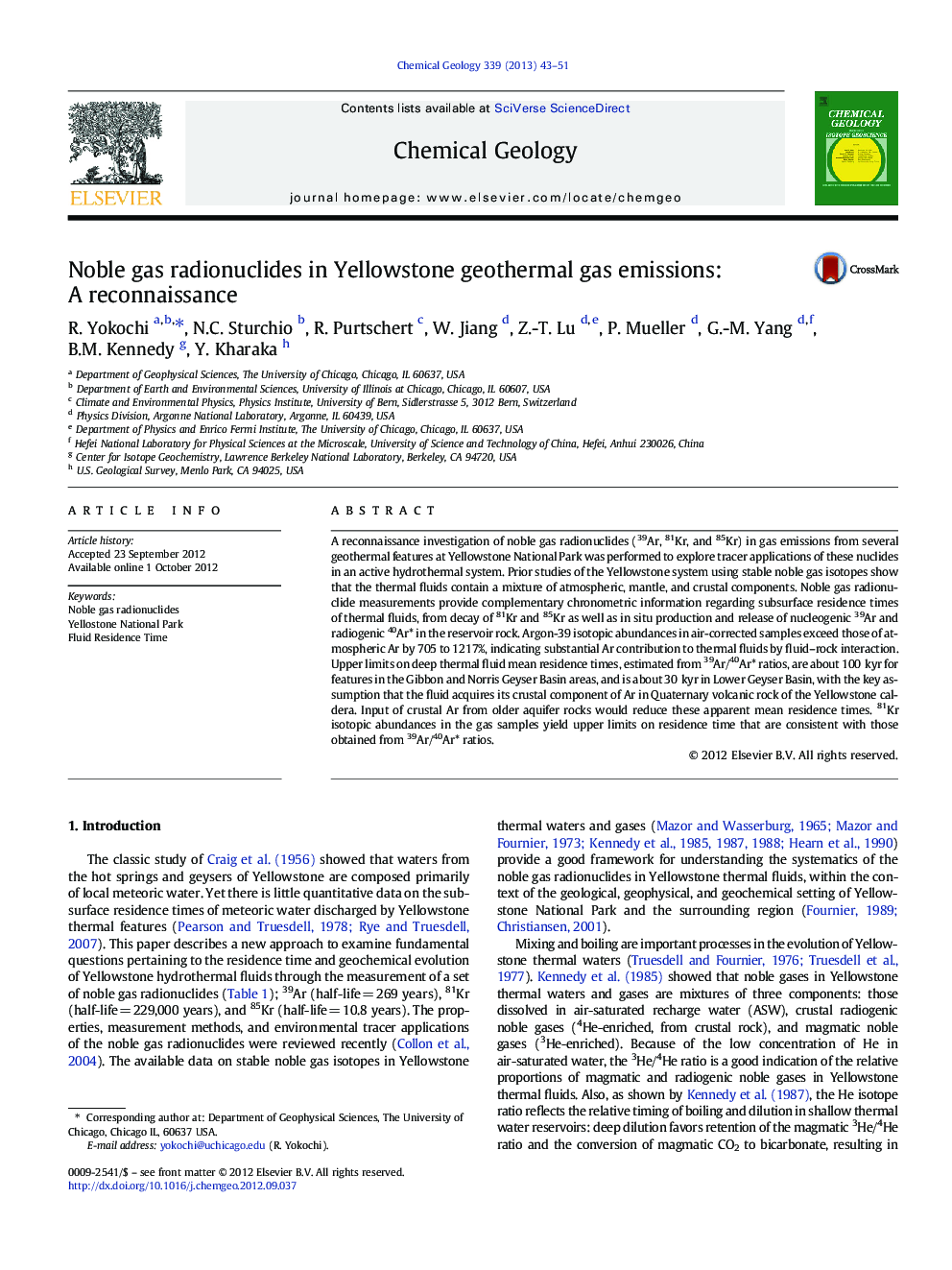| Article ID | Journal | Published Year | Pages | File Type |
|---|---|---|---|---|
| 4699124 | Chemical Geology | 2013 | 9 Pages |
A reconnaissance investigation of noble gas radionuclides (39Ar, 81Kr, and 85Kr) in gas emissions from several geothermal features at Yellowstone National Park was performed to explore tracer applications of these nuclides in an active hydrothermal system. Prior studies of the Yellowstone system using stable noble gas isotopes show that the thermal fluids contain a mixture of atmospheric, mantle, and crustal components. Noble gas radionuclide measurements provide complementary chronometric information regarding subsurface residence times of thermal fluids, from decay of 81Kr and 85Kr as well as in situ production and release of nucleogenic 39Ar and radiogenic 40Ar* in the reservoir rock. Argon-39 isotopic abundances in air-corrected samples exceed those of atmospheric Ar by 705 to 1217%, indicating substantial Ar contribution to thermal fluids by fluid–rock interaction. Upper limits on deep thermal fluid mean residence times, estimated from 39Ar/40Ar* ratios, are about 100 kyr for features in the Gibbon and Norris Geyser Basin areas, and is about 30 kyr in Lower Geyser Basin, with the key assumption that the fluid acquires its crustal component of Ar in Quaternary volcanic rock of the Yellowstone caldera. Input of crustal Ar from older aquifer rocks would reduce these apparent mean residence times. 81Kr isotopic abundances in the gas samples yield upper limits on residence time that are consistent with those obtained from 39Ar/40Ar* ratios.
► We report abundances of 39Ar, 81Kr, and 85Kr in gas emissions at Yellowstone National Park ► Krypton-81 isotopic abundances yield residence time of < 100 kyr ► Argon-39 isotopic abundances indicate contribution of nucleogenic Ar from rock. ► Thermal fluids' mean residence times are estimated from 39Ar/40Ar* ratios
